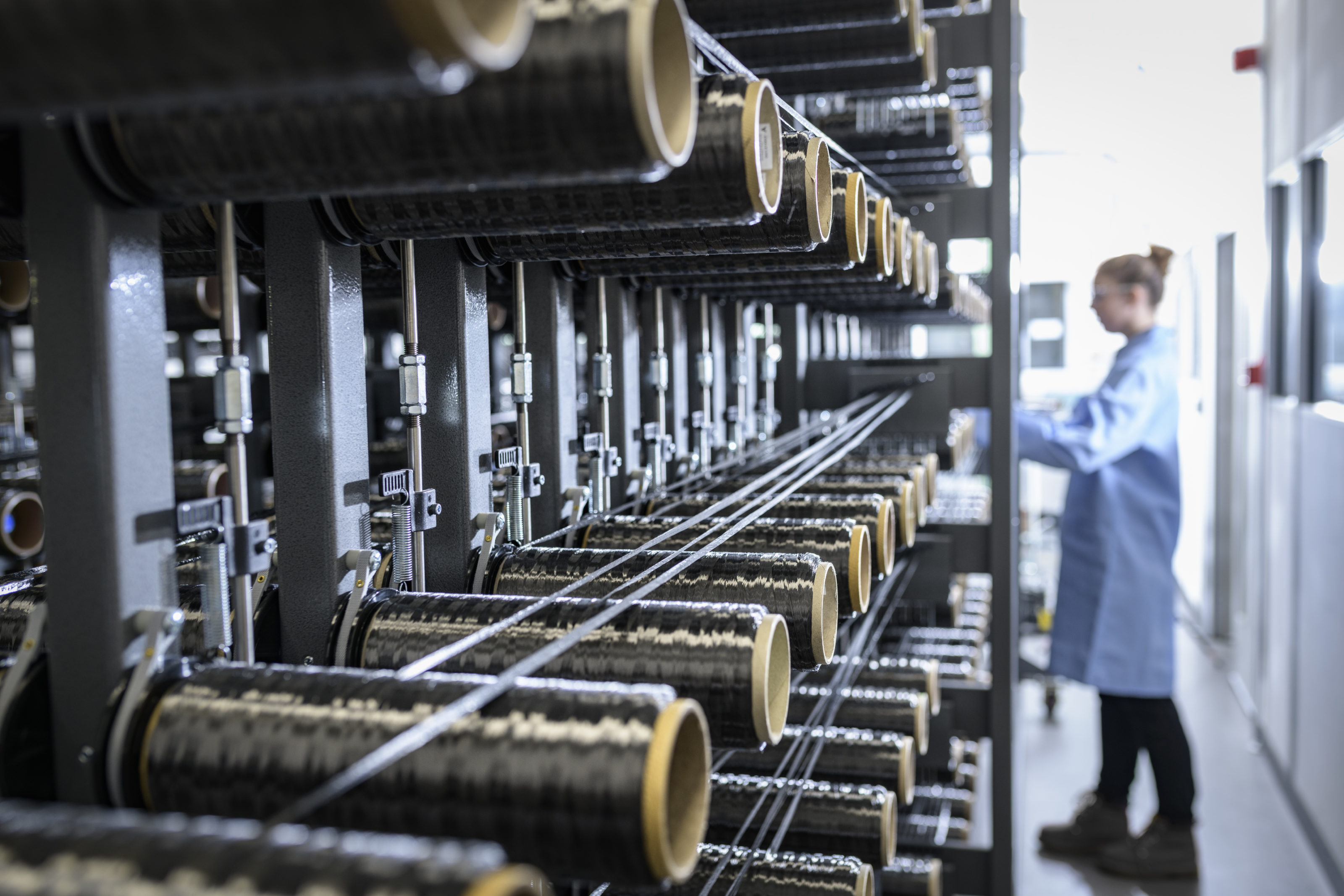As a self-described “concrete nerd,” Kelly Henry is always looking for new systems to improve a critical material that supports everyday life all over the world.
Henry works in innovation and business development in the Calgary office of Switzerland-based building materials giant LafargeHolcim. In addition to cement and aggregates, in 2019 the company sold 47.7 million cubic metres of ready-mix concrete around the world, or the equivalent required to build more than 400 One World Trade Center towers.
Henry says there is a material out there that could change the concrete world, enabling producers and builders to create superior and more durable structures, but it’s currently too expensive.
That material is carbon fibre.
But if a new technology Grand Challenge in Alberta is successful, the cost of carbon fibre could come down dramatically, transforming the global market and establishing Canada as its leader. The key is in Alberta’s vast oil sands resources.
Thin as a human hair but four times stronger than steel, carbon fibre is used to improve products used in renewable energy, electric vehicles, aerospace, aviation and recreation. Its potential for broader adoption, however, is being held back by the high cost of manufacturing, including the supply price of light hydrocarbons.
“Carbon fibres work beautifully. They provide lots of tensile properties that concrete would benefit from; it’s just way too expensive. One of the biggest reasons carbon fibre is not used in our industry is price,” Henry says.
If the price was reduced enough, carbon fibre could even be used in sidewalks to improve durability and reduce cracking, she says.
“If the expense comes down, the benefits are there and it would be jumped on almost immediately, I think.”

Instead of being burned as fuel, oil sands barrels could be used to reduce the price of carbon fibre by up to half compared to fibres made using traditional light hydrocarbon feedstocks, according to Alberta Innovates.
Earlier this year, Alberta Innovates launched the Carbon Fibre Grand Challenge, a $15-million program with the goal to expand and scale up early success in the lab to commercial projects. It’s the largest step yet in the provincial agency’s Bitumen Beyond Combustion program, which seeks new markets for Alberta’s oil sands products that create significant value while reducing carbon emissions.
As a “heavy oil,” oil sands contains components that can be complicated to process, which can result in higher greenhouse gas emissions when used to produce fuel. But it’s those same components, known as “asphaltenes,” that are expected to give Canada its edge in carbon fibre.
“It takes a current disadvantage or vulnerability of Canada’s oil sands and turns it into a strategic advantage,” says Bryan Helfenbaum, executive director of advanced hydrocarbons with Alberta Innovates.
The Bitumen Beyond Combustion program is working on developing other novel oil sands products, but carbon fibre presents “the biggest economic opportunity of the batch,” Helfenbaum says.
Research and Markets forecasts that global demand for carbon fibre will increase from approximately 77,000 tonnes in 2018 to over 150,000 tonnes by 2025. A dramatic reduction in the supply price could swing demand much higher, however.
Alberta Innovates has set a target of 400,000 tonnes per year of carbon fibre production from the oil sands by 2030, corresponding to at least 100,000 barrels per day of oil sands production.
“If we are successful to reduce the cost of carbon fibre by 50 per cent, then we expect the market to do a 10x multiple overnight at a minimum,” Helfenbaum says. “In addition to using carbon fibre as an additive to concrete and wood products, there is a tremendous opportunity in the automotive industry.”
Unlike other challenges issued by Alberta Innovates, the Carbon Fibre Grand Challenge is specifically designed to attract researchers from around the world.
“We have amazing people in this province who understand bitumen chemistry, but we have few with experience in carbon fibre research,” Helfenbaum says.
“We don’t have that industry here in any form, and we recognize that there are some distinct pockets of excellence: they tend to be in the U.S., in Europe and in certain parts of Asia, so we’re trying to access those folks through this Grand Challenge.”
The first phase of the challenge, which starts this year, is primarily designed to enable applicants to get access to oil sands feedstock and “give them some seed money to play with the asphaltenes and see what they can do with it,” he says.
“In Phase 1, they don’t have to meet specific targets, they just have to describe what they’ve done and what they’ve achieved.”
Phase 2, which is expected to run from June 2021 to December 2022, is “more ambitious,” Helfenbaum says, with specific quality targets. Phase 3, expected to run from March 2023 to December 2024, increases the quality targets and adds specific volume targets.
“The scope of the Grand Challenge is to get to a commercial demo by the expiry date in 2024,” Helfenbaum says.
“We’re basically trying to get the technology to the point at the end of the Grand Challenge where a company can make an investment decision on a commercial project.”
